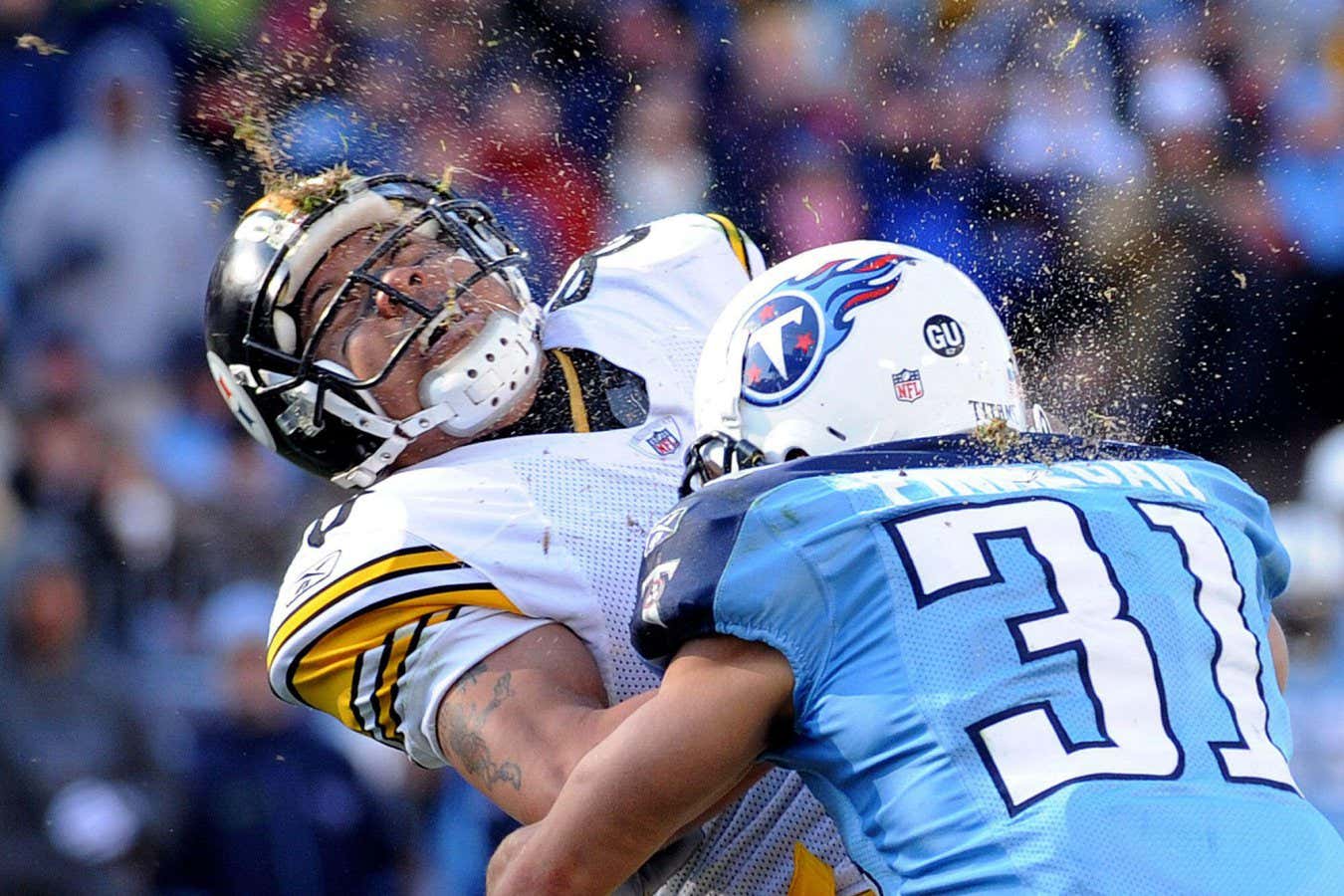

Pittsburgh Steelers’ Hines Ward is hit by Tennessee Titans’ Cortland Finnegan
AP Photo/John Russell/Alamy
IN NOVEMBER 2022, a young woman called Heather Anderson killed herself at an army barracks in Perth, Australia. Anderson was a former Australian Rules footballer who had been struggling with depression. Her family donated her brain to the Australian Sports Brain Bank, which confirmed what everyone suspected: Anderson had chronic traumatic encephalopathy (CTE), a degenerative brain disease linked to repeated blows to the head. She was the first professional female athlete to be diagnosed with this condition. She won’t be the last.
Strange as it may seem, it has taken almost a century to get to grips with what a blow to the head really means. Most people are familiar with concussion, but now we know that even mild knocks to the head can cause long-term problems. “It is misleading to assume that when the physical force applied to the head is weak, the consequences will be less,” says Allison Reiss at New York University.
These consequences are playing out primarily in professional athletes, several of whom are living under the shadow of CTE. Recently, we have seen many of them take legal action against governing bodies. But it isn’t just athletes who are at risk. Even a single blow to the head can put a person in danger of future cognitive problems.
Thankfully, alongside the…








